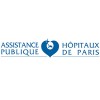
Pilot Study to Evaluate the Effect of Two Microalgae Consumption on Metabolic Syndrome
Metabolic SyndromeThe purpose of this study is to evaluate the effect of the consumption of two microalgae Chlorella vulgaris and Arthrospira platensis (Spirulina) on some biomarkers of metabolic syndrome: Total cholesterol, HDL cholesterol, LDL cholesterol, triglycerides, Apolipoprotein A and Apolipoprotein B, in overweight / obese subjects with altered lipid profile.

Thrombin Generation Assay to Assess Thrombotic Risk in Nephrotic Patients
Nephrotic SyndromeThe thromboembolic risk is increased during the nephrotic syndrome (NS) with an incidence of deep vein thrombosis 15%, pulmonary embolism of 10-30% and renal vein thrombosis of 25-37%. There is a hemostatic imbalance with urinary leakage of anticoagulant factors and increased hepatic synthesis of procoagulant factors, platelet hyperaggregability and a decrease in fibrinolytic activity. However, the identification of patients requiring anticoagulant prophylaxis remains imprecise.The thromboembolic risk is higher when the NS is related to extramembranous glomerulonephritis comparatively to others glomerulopathies. The reason of this difference is not still known. This risk increase with SN's severity and therefore with the decrease of albuminemia. Moreover, few studies have evaluated anticoagulant treatment efficacy during a NS, which clinical benefit depends also on hemorrhagic risk specific of each patient. Thus, the determination of the thrombotic risk and the modalities of anticoagulation are variable and perfectible during the NS. We propose to use the thrombin generation test (TGT) to quantify the thromboembolic risk in patients with a NS and to follow its evolution during prophylactic anticoagulation and after remission of NS.

Heart Rate Variability in Patients With Irritable Bowel Syndrome Before and After Gut-directed Hypnotherapy...
Irritable Bowel SyndromeDysregulation of the brain-gut-axis is believed to underlie symptom generation in irritable bowel syndrome (IBS). The Autonomous Nervous System (ANS) is an important route of brain-gut communication and aberrant ANS functioning, reflected in abnormalities in Heart Rate Variability (HRV) have been described in IBS. Gut-directed hypnotherapy (GHT) leads to symptom reductions in IBS and is supposed to increase parasympathetic regulation. To date, however, the role of therapeutic modulation of the ANS through GHT has been rarely examined. Aim of this pilot study is therefore to assess the impact of GHT on ANS functioning as reflected in heart rate variability. 24h-electrocardiogram before and after 10 sessions of gut-directed hypnotherapy will be administered in groups. Time and Frequency measures of Heart Rate Variability (HRV) will be extracted from 24h-electrocardiogram protocols as indicators of ANS regulation. Validated questionnaires will be utilized to assess IBS symptoms (IBS-SSS) and psychological distress (HADS-D).

Platelet Aggregation in Diabetic Patients With Acute Coronary Syndrome Treated With Different Doses...
Acute Coronary SyndromeDiabetes MellitusDiabetes is an important risk factor of coronary atherosclerosis, and it's well known that platelets of diabetic patients are hyper reactive and so resistant to common antithrombotic therapy. Moreover, in diabetic patients platelets are characterized by high turnover that is responsible of lack of protection by cardioaspirin at common dosage. The aim of our study is to asses the efficacy of different doses of aspirin in diabetic patients with acute coronary syndrome.

Comparative Effects of Dry Needling and Ischemic Compression Technique on Scalene Myofascial Pain...
Scalenus SyndromeMyofascial Pain Syndrome (MPS) is a medical term used to describe chronic regional pain syndrome that presents with hyperirritable spots called trigger points (TPs) and/or tender spots (TSs) that arise from taut bands (TB) in the skeletal muscle. Scalene myofascial pain syndrome is a regional pain syndrome wherein pain originates over the neck area and radiates down to the arm. Functionally, MPS causes the muscle to become weak and stiff, leading to reductions in range of movement. Thus, MPS is known as a major cause of morbidity, with a significant impact on daily activity, function and quality of life. The aim of this study is to compare the effects of dry needling versus ischemic compression technique on trigger points of scalene in neck pain, related disability and neck active range of motion among patients with scalene myofascial pain syndrome.

MHNA-001 for Young Adults With IBS
Irritable Bowel SyndromeThe main objective of this prospective, open-label, non-significant risk study is to assess the efficacy and safety of Mahana™ IBS together with care as usual in approximately 100 young adults with Irritable Bowel Syndrome.

Investigation of the Validity of the El 20 Questionnaire in Individuals With Carpal Tunnel Syndrome...
Patients Who Volunteered for TreatmentPatients Aged 25-60 Years1 moreThe validity of the questionnaire will be investigated by administering the El 20 questionnaire and the Boston Carpal Tunnel Syndrome Questionnaire to patients with carpal tunnel syndrome, one week apart.

Effects of Kinesiotaping and Mulligan Tapping on PFPS
Patellofemoral Pain SyndromeThe aim of this research is to compare the effects of kinesiotaping and mulligan taping on pain, hamstring flexibility, cadence and physical performance of lower limb in patients suffering from patellofemoral pain syndrome according to time duration 24, 48 and 72 hours. Randomized controlled trial done at Riphah International University Rawalpindi campus, Pakistan Railway Hospital and private clinics of twin cities. The sample size was 20. The subjects were divided in two groups, 10 subjects in kinesiotaping group and 10 in mulligan taping group. Study duration was 1 year. Sampling technique applied was non probability convenient sampling technique. Both males and females of 20-35 age bracket having anterior knee pain for more than 2 months and ≥3 pain on NPRS while performing activities i.e. ascending descending stairs, squatting and sitting for extending periods of time were included in study. Tools used in study are NPRS, Kujala pain rating sale, goniometer, active knee extension test, time up and go test.

IVIG Versus Plasmapheresis in the Treatment of Guillian Barrie Syndrome Patients
Guillain-Barre SyndromeIn this study, the investigators address the question: whether treatment with IVIG is superior to treatment using plasmapheresis for functional recovery of patients with GBS? Recovery was quantified using: The changes in the A-Clinical grading scale MRC ( medial research council sum score ) and B-overall neuropathy limitations scale as the primary outcome and the changes in Neurophysiological study 3 months after treatment as a secondary outcome. This information will be used to evaluate which treatment is more beneficial to GBS patients.

LEONIDaS Caregivers Study
Dravet SyndromeDepression1 moreDravet syndrome is a rare form of severe epilepsy that begins in the first year of life and is associated with frequent and/or prolonged seizures. Individuals with Dravet Syndrome often experience a range of comorbidities, including behavioral and developmental delays, movement and balance issues, sleep difficulties, chronic infections, and growth and nutritional issues. Patients with Dravet syndrome are at high risk of death due to SUDEP (Sudden Unexpected Death in Epilepsy), prolonged seizures, seizure-related accidents, and infections. Due to the severity of this condition, parents of children with Dravet syndrome are typically highly involved in their child's 24-hour care and this has a considerable impact on family life. Recent studies have highlighted the profound impact that such caregiving has on physical health, mental health, social function and financial resources. In particular, caregivers report high levels of stress and anxiety, fatigue, depression and social isolation. However, there is currently a lack of effective interventions to reduce the negative impact of caregiving on caregivers. The aim of this study is to prospectively study carers of individuals with Dravet syndrome to identify pharmacological and psychological factors that are associated with increased or decreased vulnerability to stress, depression and anxiety. Using a naturalistic, observational design the investigators will assess a cohort of Dravet Syndrome carers every six months for 3 years in order to further characterise trajectories of caregiver burden and the factors that influence this, including factors related to the person with Dravet syndrome (e.g. age, seizure frequency/severity, treatment/medications, comorbidities) and factors related to the carer and family environment (e.g. social engagement/isolation, fatigue, finances, relationships). The investigators will use both standardized questionnaires and a neurocognitive task (Facial Expression Recognition Task) to assess vulnerability to anxiety and depression. The study will be conducted online.
